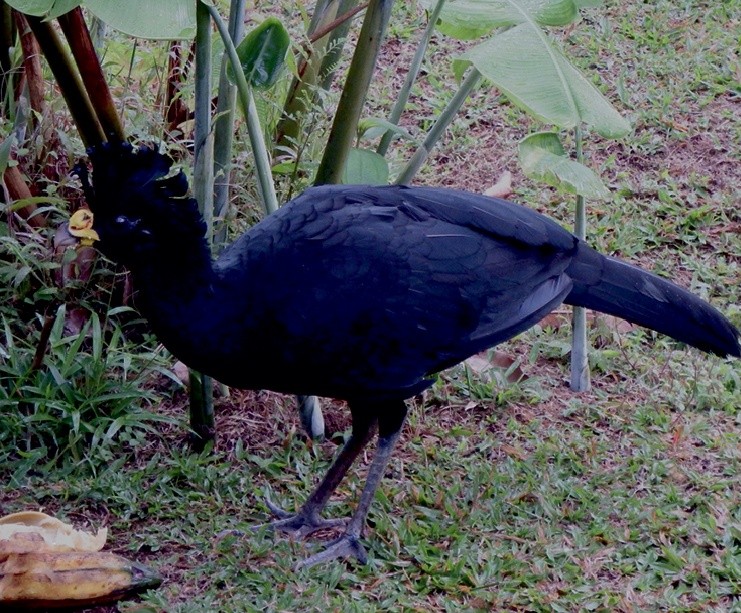Great Curassow
A species of Curassows Scientific name : Crax rubra Genus : Curassows
Great Curassow, A species of Curassows
Botanical name: Crax rubra
Genus: Curassows
Content
Description People often ask General Info
 Photo By Matteo Dal Zotto, Giuseppe Romeo, Luis A. Mena Aguilar, Dario Sonetti, Aurora Pederzoli , used under CC-BY-SA-4.0 /Cropped and compressed from original
Photo By Matteo Dal Zotto, Giuseppe Romeo, Luis A. Mena Aguilar, Dario Sonetti, Aurora Pederzoli , used under CC-BY-SA-4.0 /Cropped and compressed from original Description
At 78–100 cm (31–39 in) in length and 3.1–4.8 kg (6.8–10.6 lb) in weight, this is a very large cracid. Females are somewhat smaller than males. It is the most massive and heavy species in the family but its length is matched by a few other cracids. Three other species of curassow (the northern helmeted, the southern helmeted, and the black are all around the same average length as the great curassow. In this species, standard measurements are as follows: the wing chord is 36 to 42.4 cm (14.2 to 16.7 in), the tail is 29 to 38 cm (11 to 15 in) and the tarsus is 9.4 to 12 cm (3.7 to 4.7 in). They have the largest mean standard measurements in the family, other than tail length. The male is black with a curly crest, a white belly, and a yellow knob on its bill. There are three morphs of female great curassows: barred morph females with barred neck, mantle, wings and tail; rufous morph with an overall reddish brown plumage and a barred tail; and dark morph female with a blackish neck, mantle and tail (the tail often faintly vermiculated), and some barring to the wings. In most regions only one or two morphs occur, and females showing a level of intermediacy between these morphs are known (e.g. resembling rufous morph, but with black neck and faint vermiculations to the wings). This species has a similar voice to several other curassows, its call consisting of a "peculiar" lingering whistle. 
Size
78 - 92 cm
Colors
Brown
Black
Yellow
Red
Bronze
Gray
White
Life Expectancy
11 years
Nest Placement
Tree
Feeding Habits
Great Curassow, an omnivore, primarily feasts on fruits, supplemented with leaves, invertebrates, and small vertebrates. It forages mainly on the ground, displaying unique preferences for particular fruits. Adaptations for various foods are evident in its generalist feeding behavior.
Habitat
The great Curassow is typically found in heavy rainforests within tropical and lower subtropical zones. Its habitat extends to lowland areas and foothills, often reaching altitudes up to 1200 meters, but can be higher in some regions like Volcán Barú in Panama. While it predominantly inhabits wet, dense forests, the great Curassow is also found in seasonally drier forests and, in certain areas, is associated with specific tree species. The bird may also occasionally be seen in ravines, cleared areas, and plantations when not disturbed.
Dite type
Frugivorous
People often ask
General Info
Feeding Habits
Bird food type

Fruit
Species Status
VULNERABLE. Overall population considered to number fewer than 40,000 individuals.

 Photo By Matteo Dal Zotto, Giuseppe Romeo, Luis A. Mena Aguilar, Dario Sonetti, Aurora Pederzoli , used under CC-BY-SA-4.0 /Cropped and compressed from original
Photo By Matteo Dal Zotto, Giuseppe Romeo, Luis A. Mena Aguilar, Dario Sonetti, Aurora Pederzoli , used under CC-BY-SA-4.0 /Cropped and compressed from original